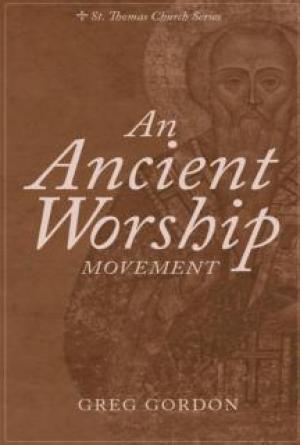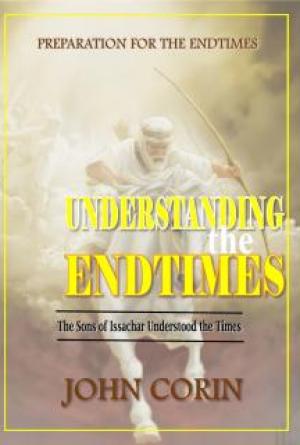Chapter 5. Buddhism And Other Religions
So early as the third century B.C., Buddhism seems to have appeared in China, though it was not until the latter part of the first century A.D. that a regular propaganda was established, and not until a century or two later still that this religion began to take a firm hold of the Chinese people. It was bitterly opposed by the Taoists, and only after the lapse of many centuries were the two doctrines able to exist side by side in peace. Each religion began early to borrow from the other. In the words of the philosopher Chu Hsi, of the twelfth century, "Buddhism stole the best features of Taoism; Taoism stole the worst features of Buddhism. It is as though one took a jewel from the other, and the loser recouped the loss with a stone."
From Buddhism the Taoists borrowed their whole scheme of temples, priests, nuns, and ritual. They drew up liturgies to resemble the Buddhist /Sutras/, and also prayers for the dead. They adopted the idea of a Trinity, consisting of Lao Tzu, P'an Ku, and the Ruler of the Universe; and they further appropriated the Buddhist Purgatory with all its frightful terrors and tortures after death.
Nowadays it takes an expert to distinguish between the temples and priests of the two religions, and members of both hierarchies are often simultaneously summoned by persons needing religious consolation or ceremonial of any kind.
Doubts.--In a chapter on "Doubts," by the Taoist philosopher Mou Tzu, we read,
"Some one said to Mou, The Buddhist doctrine teaches that when men die they are born again. I cannot believe this.
"When a man is at the point of death, replied Mou, his family mount upon the house-top and call to him to stay. If he is already dead, to whom do they call?
"They call his soul, said the other.
"If the soul comes back, the man lives, answered Mou; but if it does not, whither does it go?
"It becomes a disembodied spirit, was the reply.
"Precisely so, said Mou. The soul is imperishable; only the body decays, just as the stalks of corn perish, while the grain continues for ever and ever. Did not Lao Tzu say, 'The reason why I suffer so much is because I have a body'?
"But all men die whether they have found the truth or not, urged the questioner; what then is the difference between them?
"That, replied Mou, is like considering your reward before you have put in right conduct for a single day. If a man has found the truth, even though he dies, his spirit will go to heaven; if he has led an evil life his spirit will suffer everlastingly. A fool knows when a thing is done, but a wise man knows beforehand. To have found the truth and not to have found it are as unlike as gold and leather; good and evil, as black and white. How then can you ask what is the difference?"
Buddhism, which forbids the slaughter of any living creature, has wisely abstained from denouncing the sacrifice of victims at the Temple of Heaven and at the Confucian Temple. But backed by Confucianism it denounces the slaughter for food of the ox which tills the soil. Some lines of doggerel to this effect, based upon the Buddhist doctrine of the transmigration of souls and put into the mouth of an ox, have been rendered as follows:--
My murderers shall come to grief, Along with all who relish beef; When I'm a man and you're a cow, I'll eat you as you eat me now.
Fire Worshippers.--Mazdeism, the religion of Zoroaster, based upon the worship of fire, and in that sense not altogether unfamiliar to the Chinese, reached China some time in the seventh century A.D. The first temple was built at Ch'ang-an, the capital, in 621, ten years after which came the famous missionary, Ho Lu the Magus. But the lease of life enjoyed by this religion was of short duration.
Islamism.--Mahometans first settled in China in the year of the Mission, A.D. 628, under Wahb-Abi-Kabcha, a maternal uncle of Mahomet, who was sent with presents to the Emperor. The first mosque was built at Canton, where, after several restorations, it still exists. There is at present a very large Mahometan community in China, chiefly in the province of Yunnan. These people carry on their worship unmolested, on the sole condition that in each mosque there shall be exhibited a small tablet with an inscription, the purport of which is recognition of allegiance to the reigning Emperor.
Nestorians.--In A.D. 631 the Nestorian Church introduced Christianity into China, under the title of "The Luminous Doctrine;" and in 636 Nestorian missionaries were allowed to settle at the capital. In 781 the famous Nestorian Tablet, with a bilingual inscription in Chinese and Syriac, was set up at Si-ngan Fu, where it still remains, and where it was discovered in 1625 by Father Semedo, long after Nestorianism had altogether disappeared, leaving not a rack behind.
Manichaeans.--In A.D. 719 an ambassador from Tokharestan arrived at the capital. He was accompanied by one Ta-mou-she, who is said to have taught the religion of the Chaldean Mani, or Manes, who died about A.D. 274. In 807 the Manichaean sect made formal application to be allowed to have recognised places of meeting; shortly after which they too disappear from history. Judaism.--The Jews, known to the Chinese as those who "take out the sinew," from their peculiar method of preparing meat, are said by some to have reached China, and to have founded a colony in Honan, shortly after the Captivity, carrying the Pentateuch with them. Three inscriptions on stone tablets are still extant, dated 1489, 1512, and 1663, respectively. The first says the Jews came to China during the Sung dynasty; the second, during the Han dynasty; and the third, during the Chou dynasty. The first is probably the correct account. We know that the Jews built a synagogue at K'ai-feng Fu in A.D. 1164, where they were discovered by Ricci in the seventeenth century, and where, in 1850, there were still to be found traces of the old faith, now said to be completely effaced.
Christianity.--With the advent of the Jesuit Fathers in the sixteenth century, and of the Protestant missionaries, Marshman and Morrison, in 1799 and 1807 respectively, we pass gradually down to the present day, where we may well pause and look around to see what remains to the modern Chinese of their ancient faiths. It is scarcely too much to say that all idea of the early God of their forefathers has long since ceased to vivify their religious instincts, though the sacrifices to God and to Earth are still annually performed by the Emperor. Ancestor-worship, and the cult of Confucius, are probably very much what they were many hundreds of years ago; while Taoism, once a pure philosophy, is now a corrupt religion. As to alien faiths, the Buddhism of China would certainly not be recognised by the Founder of Buddhism in India; Mahometanism is fairly flourishing; Christianity is still bitterly opposed.
CHRONOLOGICAL SYLLABUS
Legendary Period (Twenty-ninth Century to Tenth Century B.C.)--P'an Ku and Creation--First Worship of Spirits--Worship of God, with incense-- Sacrifices to Mountains and Rivers--Worship of Sun, Moon, and Stars-- Institution of Ancestral Worship--God enjoys music, dancing, and burnt offerings--God resents bad government--Revelation in a Dream-- Anthropomorphism--Fetishism--No Devil-No Hell--Terms for God--The Character for "God" is a picture of a Man--God and Jehovah--God in the /Odes/--Hou Chi and Parthenogenesis--Superstitions and Supernatural Manifestations--Sacrifice--Ancestral Worship--Filial Piety.
Feudal Age (Tenth Century to Third Century B.C.)--The Influence of Confucianism--His Agnosticism--Weakening of Supernatural Beliefs-Consolidation of Confucianism--Human Sacrifices--Prayers for Rain--The Philosophy of Taoism--A Rival to Confucianism--But uniting to weaken the old Monotheistic Faith--Its Theory of Spirits--Modifications of Taoism--The Elixir of Life--Evidences of a Spiritual World--Mysticism.
The Empire (Third Century B.C. to modern times)--Arguments against a Spiritual World--Attributes of God--Good and Evil--Buddhism appears-- Conflict of Faiths-Struggle between Buddhism and Taoism--Taoism borrows from Buddhism and becomes a Religion--Mazdeism appears-- Followed closely by Mahometanism, Nestorian Christianity, and Manichaeism--Mahometanism alone survived--Jews arrived about Eleventh Century A.D.--Chu Hsi materialised the Confucian Canon
-Henceforward Agnosticism the rule for /literati/--Buddhism and Taoism (both debased) for the Masses--The Jesuits arrive in the Sixteenth Century-- Protestant Missionaries date from 1799.







